#taking of Vimy Ridge
Explore tagged Tumblr posts
Text
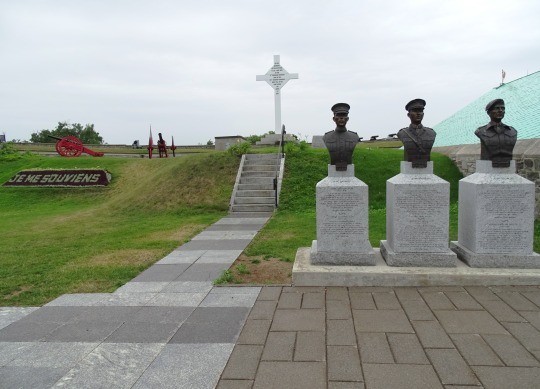
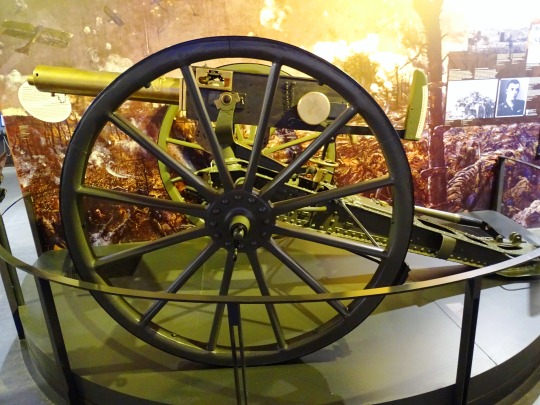




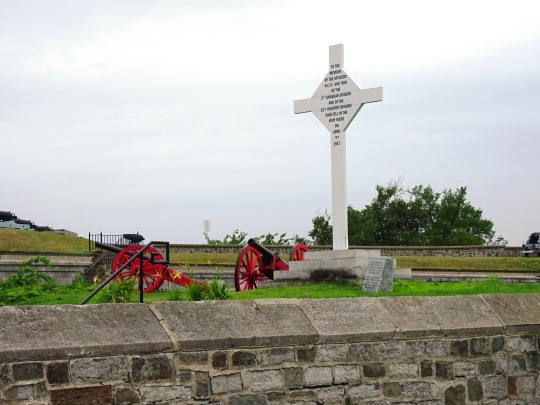
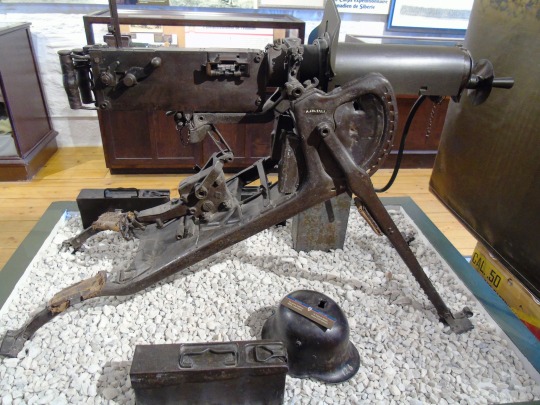
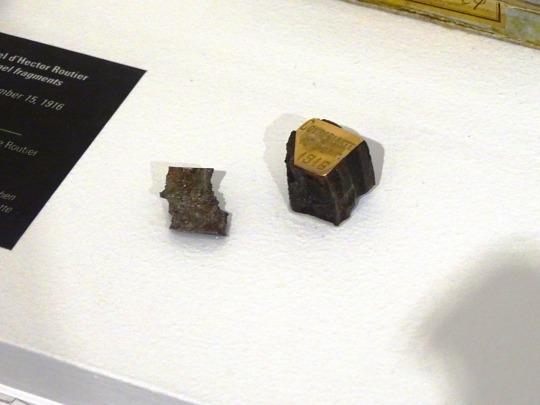



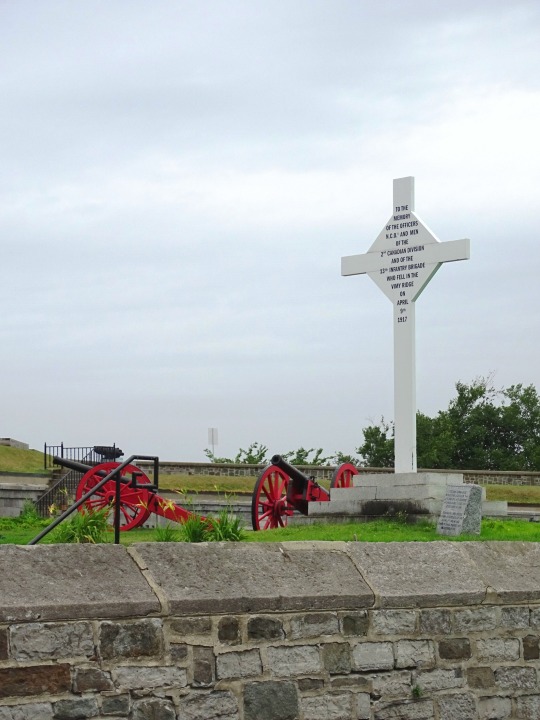
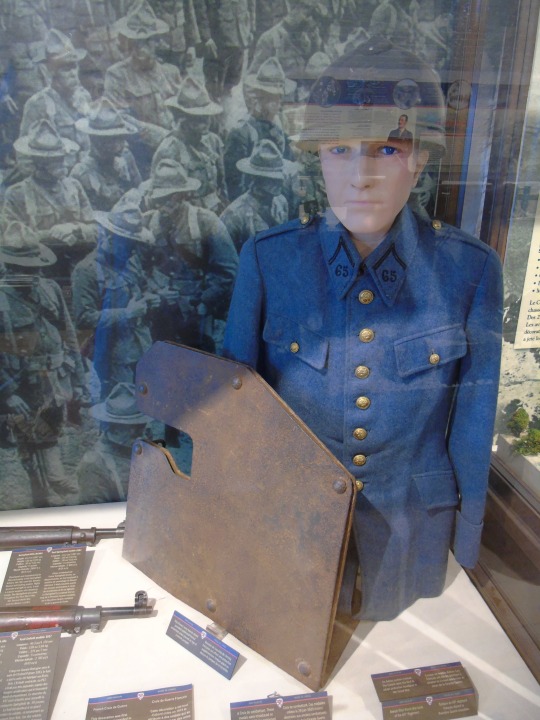
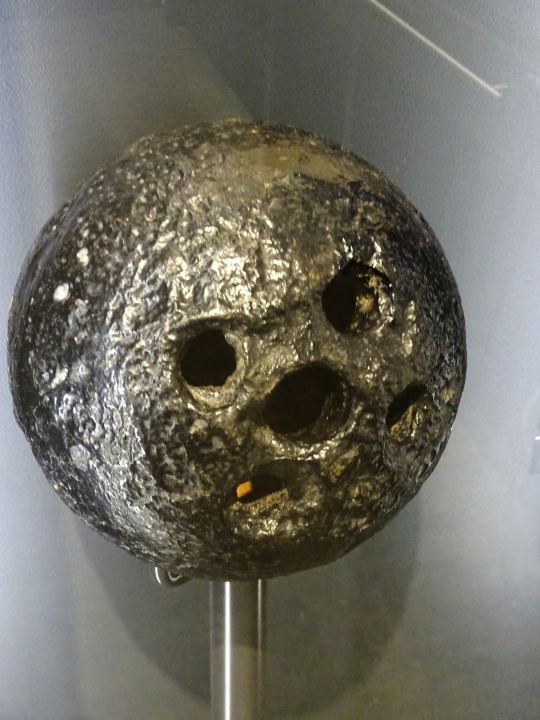

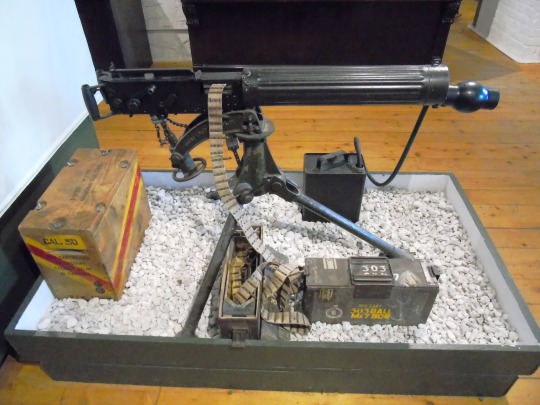


World War I: Canadian forces successfully completed the taking of Vimy Ridge from the Germans on April 12, 1917.
#World War I#Canadian forces#taking of Vimy Ridge#12 April 1917#history#anniversary#WWI#army#Citadelle of Quebec#shrapnel#Québec#Quebec City#Royal 22e Régiment Museum#landmark#tourist attraction#interior#original photography#military history#The Road to Vimy and Beyond#Halifax Citadel#Fort George#Nova Scotia#summer 2018#2015#Canada#travel#vacation#Army Museum Halifax Citadel#cityscape#World War One
8 notes
·
View notes
Text
its also very funny to read later 20th century articles declaring the Franklin Expedition "Canada's founding myth". The ghosts of all those guys who died taking Vimy Ridge looking at them like

9 notes
·
View notes
Text
Buffalo N.Y. News Article about Canadians. Nice bit of info that a lot of us don't even know. An article posted in the Buffalo News by Gerry Boley.
Misconceptions in the United States about Canada are quite common. They include: there is always snow in Canada; Canadians are boring, socialists and pacifists; their border is porous and allowed the Sept. 11 terrorists through; or, as the U.S. Ottawa embassy staff suggested to Washington, the country suffers from an inferiority complex. This is a great time to clarify some of these misconceptions and better appreciate a neighbour that the United States at times takes for granted.
With the exception of the occasional glacier, skiing in Canada in the summer just isn't happening. Frigid northern winters, however, have shaped the tough, fun-loving Canadian character. When it is 30-below, the Canucks get their sticks, shovel off the local pond and have a game of shinny hockey.
The harsh winters have also shaped Canadians' sense of humour. Canada has some of the world's greatest comedians, from early Wayne and Shuster, to Rich Little, Jim Carrey, Russel Peters, Seth Rogan, Mike Myers, Leslie Nielsen, John Candy, Martin Short, Eugene Levy and "Saturday Night Live" creator and movie producer Lorne Michaels.
The suggestion that Canadians are soft on terrorism is a myth. The 9/11 Commission reported that terrorists arrived in the United States from outside North America with documents issued to them by the U.S. government, but Canada was initially linked to allowing the terrorists into the U.S. because of laxed border control. The Canadians in Gander countered despicable terrorist acts with love and caring to their U.S. neighbours when planes were diverted there.
Americans glorify war with movies, but it is the Canadians who are often the real "Rambo." The Canadians are anything but pacifists and their history is certainly not dull. Be it on the ice or battlefield, this warrior nation has never lost a war that it fought in... - War of 1812 (versus the United States), World War I, World War II, Korea and Afghanistan. During the '72 Summit Series, Soviet goalie Vladislav Tretiak said, "'The Canadians have great skills and fight to the very end.'"
In hunting the Taliban in Afghanistan, U.S. Commander and Navy SEAL Capt. Robert Harward stated that the Canadian Joint Task Force 2 team was "his first choice for any direct-action mission."
Contrary to Thomas Jefferson's 1812 comment that, "The acquisition of Canada will be a mere matter of marching," the wily Native American leader Tecumseh and Maj. Gen. Isaac Brock captured Brig. Gen. William Hull's Fort Detroit without firing a shot. The Americans never took Quebec and when they burned the Canadian Parliament Buildings at York, the White House was torched in retaliation.
Canada consolidated its status as a warrior nation during World War I battles at Vimy Ridge, Passchendaele, Somme and the Second Battle of Ypres, where soldiers were gassed twice by the Germans but refused to break the line. By the end of the war, the Canadians were the Allies' shock troops.
In the air, four of the top seven World War I aces were Canadians. Crack shots, the names William "Billy" Bishop, Raymond Collishaw, Donald MacLaren and William Barker, with 72, 60, 54 and 53 victories, respectively, were legendary. These were the original Crazy Canucks, who regularly dropped leaflets over enemy airfields advising German pilots that they were coming over at such and such a time, and to come on up. Bishop and Barker won the Victoria Cross, the highest award for gallantry.
The pilot who is credited with shooting down the Red Baron, Manfred von Richthofen, with a little help from the Australian down under, was not Snoopy but Roy Brown from Carleton Place, Ont.
During World War II, Winnipeg native and air ace Sir William Stephenson, the "Quiet Canadian," ran the undercover British Security Coordination under the code name Intrepid. From Rockefeller Center in New York, as a liaison between Franklin Roosevelt and Winston Churchill. Stephenson invented the machine that transferred photos over the wire for the Daily Mail newspaper in 1922. Americans were not aware that the BSC was there or that it was stocked with Canadians secretly working to preserve North American freedom from the Nazis.
Also little known is that Intrepid trained Ian Fleming, author of the James Bond series, at Camp X, the secret spy school near Whitby, Ont. Five future directors of the CIA also received special training there. It is suggested that Fleming's reference to Bond's 007 license to kill status, his gadgetry and the "shaken not stirred" martinis, rumored to be the strongest in North America, came from Stephenson.
When Wild Bill Donovan, head of the U.S. OSS, forerunner of the CIA, presented Intrepid with the Presidential Medal of Merit in 1946, he said, "William Stephenson taught us everything we knew about espionage."
American military writer Max Boot wrote recently in Commentary magazine that Canada is a country that most Americans consider a "dull but slavishly friendly neighbour, sort of like a great St. Bernard." Boot needs to come to Canada, have a Molson Canadian and chat about Canadian history. He owes his freedom to Canucks such as Stephenson and the courageous soldiers and fliers of the world wars who held off the Germans while America struggled with isolationism.
Canadian inventions such as the oxygen mask Martin Baker ejection system, and anti-gravity suit, the forerunner of the astronaut suit, allowed U.S. and other Allied fighter pilots to fly higher, turn tighter and not black out with the resulting G-force. The 32 Canadians from the Avro Arrow team helped build the American space program and were, according to NASA, brilliant to a man. The most brilliant,Jim Chamberlin, chief designer of the Jetliner and Arrow, was responsible for the design and implementation of the Gemini and Apollo space programs.
Although Canadians have had a free, workable medical system for 50 years, they are not socialists and there are not long lineups, as some politicians opposed to Obama care suggest. This writer has had a ruptured appendix, hip replacement, pinned shoulder, blood clot, twist fracture of the fibula and broken foot, and in every case, there was zero cost to me. Canadians have and value a medical system for all Canadians that is free with minimal waits. That is not socialism; that is caring about fellow Canadians.
Americans may be surprised by the Canadian content in their life. Superman - "truth, justice and the American way" - was co-created by Canadian Joe Shuster, the Daily Planet is based on a Toronto newspaper, and the 1978 film's Lois Lane, Margot Kidder, and Superman's father, Glenn Ford, were both Canadians. The captain of the starship Enterprise was Montreal-born William Shatner. Torontonian Raymond Massey played Abraham Lincoln in 1956. And as American as apple pie? Ah, no. The McIntosh apple was developed in Dundela, Ont., in 1811 by John McIntosh.
Many of the sports that Americans excel at are Canadian in origin. James Naismith from Almonte, Ont., invented basketball. The tackling and ball carrying in football were introduced by the Canucks in games between Harvard and McGill in the 1870s. Five-pin bowling is also a Canadian game. Lacrosse is officially Canada's national sport, and hockey - well, Canadians are hockey. And Jackie Robinson called Montreal "the city that enabled me to go to the major leagues."
To make everyone's life easier, Canadians invented Pablum, the electric oven, the telephone, Marquis wheat, standard time, the rotary snowplow, the snowmobile, Plexiglas, oven cleaner, the jolly jumper, the pacemaker, the alkaline battery, the caulking gun, the gas mask, the goalie mask and many more.
Canadian inferiority complex? That is another myth. Never pick a fight with a quiet kid in the schoolyard. Never mistake quiet confidence for weakness. Many a bully has learned that the hard way. Canadians are self-effacing and do not brag. That does not mean we do not know who we are. We are caring but tough, fun-loving but polite and creative, and we share with each other and the world. Our history is exciting but we don't toot our horn. The world does that for us. This is the third year in a row that Canada has been voted the most respected country in the world by the Reputation Institute global survey.
Perhaps once a year around our collective birthdays, Americans can raise a toast to their friendly, confident neighbour in the Great White North.

2 notes
·
View notes
Text
Buffalo N.Y. News Article about Canadians. Nice bit of info that a lot of us don't even know. An article posted in the Buffalo News by Gerry Boley.
Misconceptions in the United States about Canada are quite common. They include: there is always snow in Canada; Canadians are boring, socialists and pacifists; their border is porous and allowed the Sept. 11 terrorists through; or, as the U.S. Ottawa embassy staff suggested to Washington, the country suffers from an inferiority complex. This is a great time to clarify some of these misconceptions and better appreciate a neighbour that the United States at times takes for granted.
With the exception of the occasional glacier, skiing in Canada in the summer just isn't happening. Frigid northern winters, however, have shaped the tough, fun-loving Canadian character. When it is 30-below, the Canucks get their sticks, shovel off the local pond and have a game of shinny hockey.
The harsh winters have also shaped Canadians' sense of humour. Canada has some of the world's greatest comedians, from early Wayne and Shuster, to Rich Little, Jim Carrey, Russel Peters, Seth Rogan, Mike Myers, Leslie Nielsen, John Candy, Martin Short, Eugene Levy and "Saturday Night Live" creator and movie producer Lorne Michaels.
The suggestion that Canadians are soft on terrorism is a myth. The 9/11 Commission reported that terrorists arrived in the United States from outside North America with documents issued to them by the U.S. government, but Canada was initially linked to allowing the terrorists into the U.S. because of laxed border control. The Canadians in Gander countered despicable terrorist acts with love and caring to their U.S. neighbours when planes were diverted there.
Americans glorify war with movies, but it is the Canadians who are often the real "Rambo." The Canadians are anything but pacifists and their history is certainly not dull. Be it on the ice or battlefield, this warrior nation has never lost a war that it fought in... - War of 1812 (versus the United States), World War I, World War II, Korea and Afghanistan. During the '72 Summit Series, Soviet goalie Vladislav Tretiak said, "'The Canadians have great skills and fight to the very end.'"
In hunting the Taliban in Afghanistan, U.S. Commander and Navy SEAL Capt. Robert Harward stated that the Canadian Joint Task Force 2 team was "his first choice for any direct-action mission."
Contrary to Thomas Jefferson's 1812 comment that, "The acquisition of Canada will be a mere matter of marching," the wily Native American leader Tecumseh and Maj. Gen. Isaac Brock captured Brig. Gen. William Hull's Fort Detroit without firing a shot. The Americans never took Quebec and when they burned the Canadian Parliament Buildings at York, the White House was torched in retaliation.
Canada consolidated its status as a warrior nation during World War I battles at Vimy Ridge, Passchendaele, Somme and the Second Battle of Ypres, where soldiers were gassed twice by the Germans but refused to break the line. By the end of the war, the Canadians were the Allies' shock troops.
In the air, four of the top seven World War I aces were Canadians. Crack shots, the names William "Billy" Bishop, Raymond Collishaw, Donald MacLaren and William Barker, with 72, 60, 54 and 53 victories, respectively, were legendary. These were the original Crazy Canucks, who regularly dropped leaflets over enemy airfields advising German pilots that they were coming over at such and such a time, and to come on up. Bishop and Barker won the Victoria Cross, the highest award for gallantry.
The pilot who is credited with shooting down the Red Baron, Manfred von Richthofen, with a little help from the Australian down under, was not Snoopy but Roy Brown from Carleton Place, Ont.
During World War II, Winnipeg native and air ace Sir William Stephenson, the "Quiet Canadian," ran the undercover British Security Coordination under the code name Intrepid. From Rockefeller Center in New York, as a liaison between Franklin Roosevelt and Winston Churchill. Stephenson invented the machine that transferred photos over the wire for the Daily Mail newspaper in 1922. Americans were not aware that the BSC was there or that it was stocked with Canadians secretly working to preserve North American freedom from the Nazis.
Also little known is that Intrepid trained Ian Fleming, author of the James Bond series, at Camp X, the secret spy school near Whitby, Ont. Five future directors of the CIA also received special training there. It is suggested that Fleming's reference to Bond's 007 license to kill status, his gadgetry and the "shaken not stirred" martinis, rumored to be the strongest in North America, came from Stephenson.
When Wild Bill Donovan, head of the U.S. OSS, forerunner of the CIA, presented Intrepid with the Presidential Medal of Merit in 1946, he said, "William Stephenson taught us everything we knew about espionage."
American military writer Max Boot wrote recently in Commentary magazine that Canada is a country that most Americans consider a "dull but slavishly friendly neighbour, sort of like a great St. Bernard." Boot needs to come to Canada, have a Molson Canadian and chat about Canadian history. He owes his freedom to Canucks such as Stephenson and the courageous soldiers and fliers of the world wars who held off the Germans while America struggled with isolationism.
Canadian inventions such as the oxygen mask Martin Baker ejection system, and anti-gravity suit, the forerunner of the astronaut suit, allowed U.S. and other Allied fighter pilots to fly higher, turn tighter and not black out with the resulting G-force. The 32 Canadians from the Avro Arrow team helped build the American space program and were, according to NASA, brilliant to a man. The most brilliant,Jim Chamberlin, chief designer of the Jetliner and Arrow, was responsible for the design and implementation of the Gemini and Apollo space programs.
Although Canadians have had a free, workable medical system for 50 years, they are not socialists and there are not long lineups, as some politicians opposed to Obama care suggest. This writer has had a ruptured appendix, hip replacement, pinned shoulder, blood clot, twist fracture of the fibula and broken foot, and in every case, there was zero cost to me. Canadians have and value a medical system for all Canadians that is free with minimal waits. That is not socialism; that is caring about fellow Canadians.
Americans may be surprised by the Canadian content in their life. Superman - "truth, justice and the American way" - was co-created by Canadian Joe Shuster, the Daily Planet is based on a Toronto newspaper, and the 1978 film's Lois Lane, Margot Kidder, and Superman's father, Glenn Ford, were both Canadians. The captain of the starship Enterprise was Montreal-born William Shatner. Torontonian Raymond Massey played Abraham Lincoln in 1956. And as American as apple pie? Ah, no. The McIntosh apple was developed in Dundela, Ont., in 1811 by John McIntosh.
Many of the sports that Americans excel at are Canadian in origin. James Naismith from Almonte, Ont., invented basketball. The tackling and ball carrying in football were introduced by the Canucks in games between Harvard and McGill in the 1870s. Five-pin bowling is also a Canadian game. Lacrosse is officially Canada's national sport, and hockey - well, Canadians are hockey. And Jackie Robinson called Montreal "the city that enabled me to go to the major leagues."
To make everyone's life easier, Canadians invented Pablum, the electric oven, the telephone, Marquis wheat, standard time, the rotary snowplow, the snowmobile, Plexiglas, oven cleaner, the jolly jumper, the pacemaker, the alkaline battery, the caulking gun, the gas mask, the goalie mask and many more.
Canadian inferiority complex? That is another myth. Never pick a fight with a quiet kid in the schoolyard. Never mistake quiet confidence for weakness. Many a bully has learned that the hard way. Canadians are self-effacing and do not brag. That does not mean we do not know who we are. We are caring but tough, fun-loving but polite and creative, and we share with each other and the world. Our history is exciting but we don't toot our horn. The world does that for us. This is the third year in a row that Canada has been voted the most respected country in the world by the Reputation Institute global survey.
Perhaps once a year around our collective birthdays, Americans can raise a toast to their friendly, confident neighbour in the Great White North.
2 notes
·
View notes
Text
Events 4.12
240 – Shapur I becomes co-emperor of the Sasanian Empire with his father Ardashir I. 467 – Anthemius is elevated to Emperor of the Western Roman Empire. 627 – King Edwin of Northumbria is converted to Christianity by Paulinus, bishop of York. 1012 – Duke Oldřich of Bohemia deposes and blinds his brother Jaromír, who flees to Poland. 1204 – The Crusaders of the Fourth Crusade breach the walls of Constantinople and enter the city, which they completely occupy the following day. 1606 – The Union Flag is adopted as the flag of English and Scottish ships. 1776 – American Revolution: With the Halifax Resolves, the North Carolina Provincial Congress authorizes its Congressional delegation to vote for independence from Britain. 1807 – The Froberg mutiny on Malta ends when the remaining mutineers blow up the magazine of Fort Ricasoli. 1820 – Alexander Ypsilantis is declared leader of Filiki Eteria, a secret organization to overthrow Ottoman rule over Greece. 1831 – Soldiers marching on the Broughton Suspension Bridge in Manchester, England, cause it to collapse. 1861 – American Civil War: Battle of Fort Sumter. The war begins with Confederate forces firing on Fort Sumter, in the harbor of Charleston, South Carolina. 1862 – American Civil War: The Andrews Raid (the Great Locomotive Chase) occurs, starting from Big Shanty, Georgia (now Kennesaw). 1864 – American Civil War: The Battle of Fort Pillow: Confederate forces kill most of the African American soldiers that surrendered at Fort Pillow, Tennessee. 1865 – American Civil War: Mobile, Alabama, falls to the Union Army. 1877 – The United Kingdom annexes the Transvaal. 1900 – One day after its enactment by the Congress, President William McKinley signs the Foraker Act into law, giving Puerto Rico limited self-rule. 1910 – SMS Zrínyi, one of the last pre-dreadnought battleships built by the Austro-Hungarian Navy, is launched. 1917 – World War I: Canadian forces successfully complete the taking of Vimy Ridge from the Germans. 1927 – Shanghai massacre of 1927: Chiang Kai-shek orders the Chinese Communist Party members executed in Shanghai, ending the First United Front. 1927 – Rocksprings, Texas is hit by an F5 tornado that destroys 235 of the 247 buildings in the town, kills 72 townspeople and injures 205; third deadliest tornado in Texas history. 1928 – The Bremen, a German Junkers W 33 type aircraft, takes off for the first successful transatlantic aeroplane flight from east to west. 1934 – The strongest surface wind gust in the world at the time of 231 mph, is measured on the summit of Mount Washington, New Hampshire. It has since been surpassed. 1934 – The U.S. Auto-Lite strike begins, culminating in a five-day melee between Ohio National Guard troops and 6,000 strikers and picketers. 1937 – Sir Frank Whittle ground-tests the first jet engine designed to power an aircraft, at Rugby, England. 1945 – U.S. President Franklin D. Roosevelt dies in office; Vice President Harry S. Truman becomes President upon Roosevelt's death. 1945 – World War II: The U.S. Ninth Army under General William H. Simpson crosses the Elbe River astride Magdeburg, and reaches Tangermünde—only 50 miles from Berlin. 1955 – The polio vaccine, developed by Dr. Jonas Salk, is declared safe and effective. 1961 – Space Race: The Soviet cosmonaut Yuri Gagarin becomes the first human to travel into outer space and perform the first crewed orbital flight, Vostok 1. 1963 – The Soviet nuclear-powered submarine K-33 collides with the Finnish merchant vessel M/S Finnclipper in the Danish straits. 1970 – Soviet submarine K-8, carrying four nuclear torpedoes, sinks in the Bay of Biscay four days after a fire on board. 1980 – The Americo-Liberian government of Liberia is violently deposed. 1980 – Transbrasil Flight 303, a Boeing 727, crashes on approach to Hercílio Luz International Airport, in Florianópolis, Brazil. Fifty-five out of the 58 people on board are killed. 1980 – Canadian runner and athlete, Terry Fox begins his Marathon of Hope Run in St. John's, NF. 1981 – The first launch of a Space Shuttle (Columbia) takes place: The STS-1 mission. 1983 – Harold Washington is elected as the first black mayor of Chicago. 1990 – Jim Gary's "Twentieth Century Dinosaurs" exhibition opens at the Smithsonian Institution National Museum of Natural History in Washington, D.C. He is the only sculptor ever invited to present a solo exhibition there. 1992 – The Euro Disney Resort officially opens with its theme park Euro Disneyland; the resort and its park's name are subsequently changed to Disneyland Paris. 1999 – United States President Bill Clinton is cited for contempt of court for giving "intentionally false statements" in a civil lawsuit; he is later fined and disbarred. 2002 – A suicide bomber blows herself up at the entrance to Jerusalem's Mahane Yehuda Market, killing seven people and wounding 104. 2007 – A suicide bomber penetrates the Green Zone and detonates in a cafeteria within a parliament building, killing Iraqi MP Mohammed Awad and wounding more than twenty other people. 2009 – Zimbabwe officially abandons the Zimbabwean dollar as its official currency. 2010 – Merano derailment: A rail accident in South Tyrol kills nine people and injures a further 28. 2013 – Two suicide bombers kill three Chadian soldiers and injure dozens of civilians at a market in Kidal, Mali. 2014 – The Great Fire of Valparaíso ravages the Chilean city of Valparaíso, killing 16 people, displacing nearly 10,000, and destroying over 2,000 homes.
2 notes
·
View notes
Text
OTD in history, Canadian troops successfully take Vimy Ridge at great cost of life.
Queen Elizabeth The Queen Mother's funeral took place in 2002.
HRH Prince Philip The Duke of Edinburgh passes away three months after getting the COVID shot.
2 notes
·
View notes
Text
as a canadian, we have laws here that things like radio stations and broadcast networks have to have a certain percentage of canadian media shown. for example, radio stations have to have at least 35% of their music be canadian. this is how bands like marianas trench became massive here, while outside of canada people do not know about them. this is SO IMPORTANT for supporting your own countries media. canada in particular has a lot of american films and tv shows filmed here because it's cheaper, and if it weren't for these laws we would be completely inundated with american media that takes advantage of our country without acknowledging us. please engage with media made in your own country for your country.
even as a canadian, the amount of american media has detriments to us, and we don't have as many differences as other countries. for instance, people here will confuse american politics for canadian politics. we aren't a two party system, but people assume we are because of the us. american politics seeps into ours, most recently with anti trans laws, because people don't separate our politics from theirs. people are confused by our language laws, which require both french and english to be present on things like prodcut labels. they don't know about our history if they weren't taught it in a canadian school, since american history gets shown in the media far more and people assume that since we're so close it must be the same. they don't know that we took vimy ridge, that we were essential to the allies in ww1. they don't know about our indigenous history, about people like louis riel, about how the inuit were displaced. people might know about stonewall but not about the toronto bathhouse riots, and definitely not about queer history in the prairies. they don't know the history between the french and english and how it shaped our country. people use american terminology even though it's incorrect here, like saying "african-american" or "native american" when i've never heard those terms outside of american media. because we're not american. i've also seen americans police these terms too, telling people to use them even when the speaker is not from america and those terms would be inaccurate.
so please, engage with media made by your own country, especially stuff local to you. make playlists, find tv shows and movies, look for art, anything. support local artists. learn your history. i'm thankful for canadian content laws here, but unfortunately other places don't have the same thing, and it only makes americanization harder to avoid. and if you are from the us, engage with more international media. up here in canada we have lots of stuff to check out if you want to start close to home. just listen to our radio stations, watch some cbc, search canadian on streaming platforms. there is so much amazing media outside of the us, and it deserves recognition.
DO NOT LET SOCIAL MEDIA TURN YOU INTO AN AMERICAN
145K notes
·
View notes
Text
Vimy Ridge Day: Canada Remembers

On Vimy Ridge Day, we delve into the historic battle where Canadian courage was displayed, shaping the nation's legacy in the Great War. As the first light of dawn crept over the French countryside on April 9, 1917, Canadian soldiers embarked on a mission that would etch the name Vimy Ridge into the annals of Canadian history. Prime Minister Justin Trudeau's recent statement on Vimy Ridge Day serves as a poignant reminder of the bravery and sacrifices of those Canadian soldiers who fought for peace, freedom, and justice during one of the First World War's most significant battles.

Jubilant Canadian soldiers return to their billets after the Battle of Vimy Ridge, May 1917. Photo by Biblio Archives. Flickr.
A Testament to Courage and Unity
The Dawn of Vimy Ridge In the chill of early morning, following months of meticulous planning, Canadian forces launched an assault on the German-held Vimy Ridge. This strategic victory, marking one of the Great War's most memorable moments, came at a great cost. Over 7,000 Canadians were wounded, and nearly 3,600 never made their return, paying the ultimate price for their bravery. The Battle's Impact on Canadian Identity The Battle of Vimy Ridge stands as a landmark moment, not only for its military significance but also for its role in shaping Canadian identity. For the first time, soldiers from all four divisions of the Canadian Corps fought side by side, embodying the spirit of unity that transcends geographical boundaries. This unity, born out of shared struggle and sacrifice, continues to inspire and define what it means to be Canadian.

Prime Minister of Canada lays a wreath at the Tomb of the Unknown Soldier in Arlington National Cemetery. Photo by Arlington National Cemetery. Flickr.
Reflections from the Prime Minister
Honouring the Fallen Prime Minister Trudeau statement: “Today, we remember the bravery and sacrifices of the Canadian soldiers who fought for peace, freedom, and justice in the Battle of Vimy Ridge. “In the early morning of April 9, 1917, following months of careful preparation, Canadian soldiers stormed German-occupied Vimy Ridge in northern France. After four intense days of fierce combat, our troops pushed the Germans back, capturing the ridge. Canada’s success at Vimy Ridge marked one of the First World War’s most memorable victories, but victory came at a heavy cost. More than 7,000 courageous Canadian soldiers were injured, and almost 3,600 never returned home. “The Battle of Vimy Ridge was a landmark moment in Canada’s history. It was the first time that all four divisions of the Canadian Corps, representing diverse regions of our country, fought side by side – united. These extraordinary soldiers helped forge our Canadian identity. Their bravery continues to inspire us. Today, the Canadian National Vimy Memorial stands as a tribute to this remarkable battle and to all those who served in the First World War. On its side, etched in stone, are the names of Canadians who paid the ultimate price in France during the conflict and have no known grave. “On Vimy Ridge Day, we honour the Canadian soldiers who answered the call of duty. We also take the opportunity to express our gratitude to all the brave Canadians in uniform who serve to defend peace, freedom, and democracy – at home and around the world. “Lest we forget.” A Legacy That Endures Vimy Ridge Day is an opportunity to reflect on the values that define us as Canadians — peace, freedom, and democracy. Additionally, it's a day to honour those who have answered the call of duty and to express gratitude to the brave Canadians who continue to serve in uniform, defending these values at home and abroad.

Memorial service to the men of the 87th Battalion who fell at Vimy Ridge, September 1917. Photo by Biblio Archives. Flickr.
Canada's Role in the Great War
From Enthusiasm to Enduring Legacy Canada's involvement in World War I, triggered by Britain's declaration of war on Germany, saw a nation rallying to support the war effort. From the training grounds of Valcartier, Quebec, to the battlefields of Europe, over 619,000 Canadians enlisted to fight. Their bravery in battles like Ypres, Vimy Ridge, and Passchendaele not only earned Canada a place on the world stage but also contributed to a burgeoning sense of national identity and pride. A Dual Legacy of Unity and Division While the war fostered a sense of unity, it also exposed and deepened divisions, particularly through the conscription crisis of 1917. Yet, Canada emerged from the war transformed, with a newfound autonomy and a cautious approach to international responsibilities, having paid a high price in the quest for peace.
Lest We Forget
As we commemorate Vimy Ridge Day, let us remember the sacrifices made by those before us — sacrifices that have shaped the very fabric of our nation. Their legacy, a testament to courage, unity, and the enduring spirit of Canada, continues to inspire generations. On this day, we stand together, united in our gratitude and our resolve to never forget. Sources: THX News & The Canadian Government. Read the full article
#BattleofVimyRidge#Canada’smilitaryhistory#CanadianCorpsWorldWarI#Canadianidentityforged#CanadiansoldiersGreatWar#FirstWorldWarCanada#JustinTrudeauVimystatement#LestweforgetCanada#VimyMemorialtribute#VimyRidgevictory
0 notes
Text
War Part 2 - Beyond the Pleasure Principle – Sigmund Freud and Beyond
Vimy

Like in the prior episode, Freud expected that WWI would make people confront death without any magical thinking, and it could also provide vigor for the person who truly accepted death. The war was fearful and traumatic, but it also gave an opportunity for people to achieve eternal glory, and if one could survive, a story to bask in for the rest of one's life. One battle that displayed both sides of terror and victory was Vimy Ridge. It was an example of a big challenge that was tempting to tackle, but not without a lot of casualties. In Vimy: The Battle and the Legend, Tim Cook described how valuable the ridge was to the allies and the sacrifice soldiers made, especially the French, to try and take it. "The 7-kilometre Vimy Ridge protected the coal-rich area around Lens that the Germans occupied and desperately needed to retain to supply their war effort...The ridge was fiercely contested because it was a commanding geographic feature on the Western Front. Whichever army held it had an enormous advantage over the force at its base...When the Canadians arrived at the foot of the western side of the ridge in October 1916, Vimy was a vast desert of shell craters and rotting corpses...There remained thousands of unburied corpses and fragments of bodies. The shell craters were filled with foul, murky water, and many contained the rotting remains of the fallen who had dragged themselves into the depths and never emerged...'Vimy was a huge grey mountainous mass of mud,' recounted Sergeant Robert Kentner. 'It appeared as though nothing had ever or ever could live upon its surface. The absolute negation of beauty, a monument of wickedness, most distorted and repulsive.'" From the vantage point of the Germans, they could see the Canadian trenches and look "straight down on it and [give] hell with artillery and trench-mortar fire everyday...Sachimoro Moro-oka, a Japanese Canadian serving with the 50th Battalion, recounted one grisly sight: 'A shell exploded among a group of men and created a terrible mixture of blood, flesh, and mud. We looked on in horror. There were bodies with no heads. One poor soul was blinded, blood pouring from his eyes.'"
Learning from the mistakes of The Somme the Canadians and British had to come up with more sophisticated methods of attack. These involved the spreading of command to empower "junior officers and non-commissioned officers (NCOs). If officers (majors, captains, and lieutenants) were knocked out in battle, the lower ranks (sergeants, corporals, and privates) were to continue on to their objectives." The new tactics required more grenades and machine guns. Grenades could be used to attack trenches and machine guns. Lewis machine guns were also used on the ground effectively and could also be used to shoot from the hip. "The Lewis gun provided more firepower than a section of riflemen and was used to pin down the enemy and allow comrades to advance and attack positions from a more advantageous location." Within around 200 metres most riflemen could use the Lee Enfield rifles. Grenades could be used within 30 metres with a blast radius of 18 metres and deadly at 5 metres. From close quarters most soldiers preferred to shoot the enemy or throw grenades, but in some cases, a bayonet had to be used. "While statistics from the war reveal a very low casualty rate from bayonets (far less than 1 percent of wounds), many of the bayonet stab wounds, which usually involved a twisting motion to free the bayonet from muscle and bone, were lethal, and under-reported in official combat records."
The airplane also revolutionized war technology to help with artillery accuracy. British planes flew over the trenches and better maps were made. The maps, along with taking into account of "wind, barometric pressure, and rain," were another advancement. Using triangulated microphones to "listen for the bark of enemy guns, the sound of the shell or observing the flash from the muzzle, they could locate the guns' position over time." This allowed for more pinpoint artillery fire to destroy the German guns so the fighters would have less to contend with when they got closer to enemy trenches. Underground caves were also used to setup explosives near trenches. Explosives were detonated near zero-hour to create more chaos before the advancement.
Not only did the Canadians and British have to go up hill at Vimy, but they also had to contend with barbed wire snagging kilts, socks, and the sticky mud was already effective at removing boots from soldiers. One of the advancements of artillery, to deal with this problem, was being able to make shells that were sensitive enough to explode when contacting barbed wire. This helped to clear the way for the Canadians.
How the soldiers moved were in "groups, but the units were trained to advance in more staggered and broken formations, using the ground and rushing ahead when the fire against them shifted to other targets...[also] known as 'fire and movement' tactics." As important as those tactics were, artillery was very crucial in WWI. The early strategies became stale in that enemies knew when the bombardments were completed and the soldiers would naturally advance towards them. The Germans who hid in bunkers during bombardments, had enough time to return to their stations and machine guns, to mow down the advancing enemy. In response to the predictability, improved coordination was needed to create more surprise by using a "creeping barrage...The infantry had to 'lean into the barrage' and stay within 35 to 65 metres of the wall of fire...[They] moved 100 metres every three minutes." When the barrage was complete the Canadians were close enough to attack the trenches, catching many of the Germans off guard. Using rifles, grenades, machine guns, and the odd bayonet, the ridge was eventually won over. Depending on which area the soldiers ended up, some of them had little mopping up to do. "By the time the Albertans of the 31st Battalion arrived at Thélus, little remained but smoking rubble and dismembered corpses...The Germans on the receiving end of the inferno were often killed, wounded, or buried alive..." Some were trapped in their bunkers and asphyxiated. In areas where there were still rifles and machine guns in action, the battle was much more difficult and required more casualties to win. Many were chewed up by bullets. "...An enemy officer of the 261st Prussian Reserve Infantry Regiment reported that the Canadian 'corpses accumulated and formed small hills of khaki.'" WWI tanks increased morale but they were inaccurate and their tread could easily be bombed and made ineffective.
On April 9th and 10th the Canadians had lost 2,967 men. "The entire face of the hill was covered with German green and Canadian khaki. Men lay out there in that blood-soaked field, some dead, some dying." One soldier wrote that "bodies could be seen protruding from shell holes half filled with water stained with human blood. The bodies were in all shapes and shapelessness of sudden death, many on their backs with hands raised and a wild look of terror on their faces from the shell or bayonet that had hurled them to eternity." Many heroes who survived those days would only live long enough to die another day and had to be posthumously be awarded. The ones who survived would be able to bond with the rest of the Canadians who felt the country was distinguished by the battle as can be seen commemorated by the astonishing Vimy Memorial.
Not everyone who survived was psychologically in one piece. From descriptions of soldiers feeling emotionally deadened, there were much more serious nervous cases. At the time it was called "shell-shock." Charges of cowardice, malingering, and the efforts of medical teams and their inventive ways of moving neurologically damaged soldiers to other duties, became a problem for armies. In A Weary Road, by Mark Osborne Humphries, he outlined the PTSD experience in WWI. "Because nervous soldiers were treated alongside other medical and surgical cases, they were sometimes victimized by staff and other patients. For example, Private Cecil G., a thirty-one-year-old civil servant, joined up in 1914 and served two years in the trenches before being knocked unconscious by a shell at Vimy Ridge. When he came to he vomited and was shaking all over. In hospital he began to suffer from terrible nightmares as well as headaches, tremors, and vague pains that came and went. G. was self-conscious and felt that the other patients were always watching him. 'He was unable to remain in one ward because he thought the patients believed he was [malingering],' recorded G.F. Boyer, his neurologist at Granville Special Hospital in England. 'He would break down and cry when he thought of it.'" Shell shock affected motor function as well. "'One poor fellow, a big chap, was crying like a baby with shell-shock,' wrote Lance-Corporal Donald Fraser, a machine-gunner in the 31st Battalion. 'His nerves and control were absolutely gone.'" Many others had a hyper-vigilant Thousand-yard Stare."The war that destroyed bodies with reckless abandon and also shattered souls."
War neuroses
The curious results of the some of these psychologically shattered patients were of interest to Sigmund Freud and early Psychoanalysts. Posttraumatic Stress Disorder, being a complex disorder, it has to be approached from multiple angles. The 1st casualty of Freud's theories was the patterns of psychological behaviour that didn't conform with The Pleasure Principle. Many soldiers with PTSD had dreams and thoughts that obsessed with traumatic memories, worsening their stress. Typically, a normal mind does the opposite and continually searches for pleasure. Setups and payoffs. At the time Freud thought "that these processes are invariably triggered by an unpleasurable tension, and then follow a path such that their ultimate outcome represents a diminution of this tension, and hence a propensity to avoid unpleasure or to generate pleasure." Going back to his Project for a Scientific Psychology (1895), Freud viewed neurons as having different functions. He saw the Ego as conditioned and built up by neurons that provide a constant cathexis [emotional investment ψ] and those that had a less sticky emotional investment, perception Φ. Consciousness for Freud, similar to Buddhism, co-arises with Perception. Perception provides qualities for consciousness, and the ego moves attention towards interesting perceptions and emotionally invests in them to provide satisfaction, "which is of such importance for the whole course of development) and the repetitions of that experience - states of craving which developed into states of wishing and states of expecting." The importance of these functions continued for Freud as a "biological justification of all thought...The craving involves a state of tension in the ego; and as a result of it the idea of the loved object (the 'wishful idea') is [invested with emotion.]" The wishful idea has to be a little hazy and dreamy so that it doesn't become "confused with a perception.." The emotional investment requires a payoff/discharge, "and...its discharge must be postponed till conditions of quality arise from it which prove that it's real [in perception]." As reality matches with the dreamy image of the wish, with the effort of thought, there is satisfaction, release or an identity. This is similar to what he wrote later in The Interpretation of Dreams, about a "'perceptual identity' - a repetition of the perception which was linked with the satisfaction of the need." The repetition of the same perceptions helps to build memory identities in the mind and the human personality. For example, we remember where all the "goodies" are in the environment, and create a personal identity around them. This is often why people have names that they've inherited from ancestors who were named for their jobs, or the products they were able to produce. Those higher up on a hierarchy would need to be able to label people based on their uses. The conditioned mind is utilitarian by how it labels objects and people. Tools for gratification and release.
Further, like in the noting meditation method, these thought objects are given a reality just like perceptions and can be labeled with word associations. "....Facilitations produced by thought leave only their result behind them and not a memory....Indications of discharge by way of speech help to make good this lack. They put thought-processes on a level with perceptual processes; they lend them reality and make it possible to remember them." This allows us to be aware of our thinking processes and the thinking processes of others. The brain can then make copies of important objects and people and imitate them into the mind.
Mental Noting - Mahasi Sayadaw & Daniel Ingram: https://www.isbns.net/isbn/9781911597100/
In Psycho-analysis and the War Neuroses, Freud focused on excessive repression and how it can come from external sources of fright and internal sources in peace-time, where desire is considered a foe and threatening to the super-ego of social standards. Of course developments in psychology on the topic of Posttraumatic stress disorder moved beyond early theories, but studies do match his hypotheses of internal battles and repression. Our mind really does want to avoid thinking about stressful topics, obsess about what others think, but there is more relief in processing these stressful thoughts than avoiding them. Freud found that in many cases, people who were injured in fact exhibited less signs of shell shock than those who were simply close to the danger. "In the case of ordinary traumatic neurosis, two features stand out very clearly, and have proved a useful starting point for further thought: first, the fact that the key causative element appeared to lie in the surprise factor, the fright experienced by the victim; and second, the fact that if any physical wound or injury was suffered at the same time, this generally inhibited the development of the neurosis." In Coping with PTSD in Returning Troops, they elaborate some of the social reasons for this phenomenon. "Physical injury reduces the chance for development of anxiety or conflictive feelings related to the traumatic event, because unlike psychic traumas, physical injuries cause much more sympathy and affection in the environment." There are also studies that hint at developmental preexisting vulnerabilities, as Freud pointed out before but was only able to sketch. "It is known that early life environmental events have persisting effects on central nervous tissue structure and function, a phenomenon called 'developmental programming.'" There are also signs of genetic predisposition, on top of early life stresses, that increase the likelihood of adult PTSD. Another sign of PTSD is the presence of persistent anger, and any treatments have to acknowledge the anger and outbursts that accompany it. Some of the methods of treatment include group therapy where they "[work] through deeply traumatic memories" and explore "deeply repressed and emotionally invested experiences." In a study on possible treatments for PTSD in the book, they allowed for "gradual completion of the pathological mourning process, [and it] enabled [a] reduction of depression." Another method that showed effectiveness was exposure therapy, and behaviour activation, where token rewards are given for successful attempts at moving through triggering activities. Whatever method a patient pursues, they must satisfy the mind's need to understand and process trauma.
Beyond the Pleasure Principle
I have trod the upward and the downward slope; I have endured and done in days before; I have longed for all, and bid farewell to hope; And I have lived and loved, and closed the door. ~ Robert Louis Stevenson
I have trod the upward and the downward slope - Ralph Vaughan Williams - Bryn Terfel: https://www.youtube.com/watch?v=Sl-sbL-KpB0
In Beyond the Pleasure Principle, Freud tackled the problem of a Repetition Compulsion, where the mind would constantly return to traumatic thoughts in contradistinction to what he normally observed in people, which is to dwell in thoughts of anticipated pleasure and relief. It was a kind of "going back to the drawing board" situation he found himself in. Both pleasure and stress had to be reviewed along with the quantity of intensity, which was hard to measure at the time, and could only be described as a larger or smaller pressure or swelling, requiring a release. Either the Ego finds replacement activities to drain some of that libido as a setup and payoff in chosen targets for release, sublimation, or the unconscious would take over and force a release in an uncontrolled way at targets that the ego and parental super-ego were trying to avoid.
"After much consideration we are minded to posit a connection between pleasure/unpleasure and the quantity of excitation present - yet not [bound] in any way - within the psyche; a connection whereby unpleasure corresponds to an increase in that quantity, and the pleasure to a decrease....The key determining factor so far as the sensation is concerned is probably the intensity of the decrease or increase over a particular period of time." For example, in a war, there must be an enormous increase in intensity as soldiers see the reality of the danger to their own survival, and attention moves towards wishes to defeat an enemy, achieve a military goal, and the release that happens every time a goal is finally achieved. The intensity of the pain continues and increases when there is failure and low morale. This can happen in less intense situations when smaller preferences are not met. Some examples are: waiting for a loved one for an appointment and they don't show up. Waiting for an important exam result, and it's negative. As experiences repeat, with constant intense stimuli, the mind can become jaded with some people, or overload and breakdown with others.
How the mind views the world in terms of where it wants to be is described by Freud with a quote by G.T. Fechner on his Constancy Principle. "'Inasmuch as conscious impulses are always associated with pleasure or unpleasure, we may suppose that pleasure and unpleasure, too, are linked psycho-physically to conditions of stability and instability; Every psycho-physical motion that passes the threshold of consciousness involves pleasure to the degree that it moves beyond a certain point towards complete stability, and unpleasure to the degree that it moves beyond a certain point away from that stability; whilst between these two points - which may be defined as the qualitative thresholds of pleasure and unpleasure...The psychic apparatus is geared to keep the quantity of excitation present within it at the lowest possible level, or at least to keep it constant." In other words, we really like it when chaos moves towards order according to our preferences and really hate it when the stability of our preferences breaks down and moves back into chaos. Of course this is also true when other people do things for us, starting with our parents and eventually powerful authority figures who are responsible for things we cannot control.
Of course achieving goals is not a constant thing and the world is a dangerous place. Looking purely for pleasure, has to give way to something that allows for us to survive long enough to gain pleasure later. "[The Pleasure Principle], as far as self-preservation is concerned, is never anything but useless, indeed highly dangerous, given the challenges posed by the external world. Thanks to the influence of the ego's self-preservation drive it is displaced by the reality principle, which, without abandoning the aim of ultimately achieving pleasure, none the less demands and procures the postponement of gratification." Of course pleasure can take back it's power from the reality principle at times. "...There are countless occasions where the pleasure principle overwhelms the reality principle, to the detriment of the entire organism." The ego's response with the reality principle provides a form of unpleasure when unacceptable desires are repressed. "...There are numerous occasions where individual drives, prove to be incompatible in their aims and demands with...the ego. They are therefore separated off from this unified whole through the process of repression; they are restricted to lower levels of psychic development and, for the time being at least, cut off from any possibility of gratification...Most of the unpleasure we feel is perceptual unpleasure, involving perception of the [swelling] pressure of ungratified inner drives, or perception of external [dangerous] things." We can see here already a need for self-development so some of that pressure can find different objects and skills to discharge on. Freud viewed it as sublimation, and Carl Jung looked at this energy as something that could develop the human personality further.
Now the problem of the Pleasure Principle is this binding of perceptions into memory and how it can go into areas of unpleasure in a way that is self-destructive. As Freud encountered more patients they didn't always follow the pattern of avoiding pain and pursuing pleasure. In situations of traumatic flashbacks, the mind of patients often returned to the trauma, instead of focusing on pleasure. The experience of survivors of the war didn't add up with the pleasure principle. "The terrible war that has only just ended gave rise to many [traumatic neuroses]." Freud then lists a variety of traumas and their impact, and highlights the most damaging one. "'Fear' represents a certain kind of inner state amounting to expectation of, and preparation for, danger of some kind, even though the nature of the danger may well be unknown. 'Dread' requires a specific object of which we are afraid. 'Fright', however, emphasizes the element of surprise; it describes the state that possesses us when we find ourselves plunged into danger without being prepared for it."
This type of surprise, especially when the fear is treated as real in the mind, overloads the mind. This isn't like a scary movie, though movies like Jaws, that create a primal fear of being eaten and annihilated, go closest to that feeling. In real conflicts, wars and domestic abuse, the mind has the tendency to go over those memories, even if the individual is recreating lots of unpleasure in the process of doing so. "...It is the distinctive feature of the dream-life of patients with traumatic neurosis that it repeatedly takes them back to the situation of their original misadventure, from which they awake with a renewed sense of fright...It would be rather more in the nature of dreams to conjure up pictures from the time when the patient was healthy, or else pictures of the return to health that is hoped for in the future...."
Jaws: https://www.youtube.com/watch?v=U1fu_sA7XhE
IT: Chapter 2: https://www.youtube.com/watch?v=zqUopiAYdRg
Hereditary: https://www.youtube.com/watch?v=V6wWKNij_1M
Child's Play
As Freud always did, he went back to childhood experiences to help explain adult phenomenon. In Beyond the Pleasure Principle, he explored a child's response to his mother going away. This child he studied had a strong attachment to his mother who took good care of him. In response to his mother leaving him for hours at a time, he would play a game, as Freud hypothesized, of "[throwing a] reel over the edge of his curtained cot so that it disappeared inside, all the while making his expressive 'o-o-o-o' sound, then used the string to pull the reel out of the cot again, but this time greeting its reappearance with a joyful Da!" Freud's conclusion was that it was a coping mechanism to control and master the feelings associated with his mother's disappearance and reappearance. It was a re-enactment, rehearsal, or a practice to deal with trauma. By turning the unpleasant experience of his mother's disappearance into a game he took his passive role and made it into an active one to give him a sense of control and mastery. There was also another possibility based on Freud's observations when the child flung an object away to "take revenge on his mother for having gone away from him." Taking aim at the Oedipus Complex, Freud interpreted this child's feeling towards his absent father. "This same child whose game I had observed when he was one and a half had the habit a year later of flinging down any toy that had made him cross and saying 'Go in war!' At the time he had been told that his absent father was away in the war, and he didn't miss his father in the least, instead giving out the clearest indications that he did not want his exclusive possession of his mother to be disrupted...It is plainly the case that children repeat everything in their play that has made a powerful impression on them, and that in so doing they [discharge] the intensity of the experience and make themselves so to speak master of the situation." Freud then connects it to the traumatized adult example, and the need to avoid surprise and fright. "These dreams seek to assert control over the stimuli retrospectively by generating fear - the absence of which was the cause of the traumatic neurosis in the first place." It's a way for the mind to remind oneself of a lesson that has to be learned to avoid traumatic situations like these in the future, or to master them.
In the case of the child, hostility that appears is a form of motivation to search for a reward that helps him or her, and eventually the adult, to replace passivity with activity towards domination and safety. Children's games that get too intense can also predict adult competition where there's escalation and envy, revenge and sabotage that become tempting. If something bad happens to a child, they can often repeat it onto another victim, and it can become contagious where abuse spreads with mimetics/imitation, and often it's spread to an innocent target that is easier to access. Freud gives an example of a scary experience with a doctor. "If a doctor examines a child's throat or performs some minor operation on him, we can be quite sure that this frightening experience will become the content of his next game - but the gain in pleasure from a different source is plain to see. Exchanging his passive role in the actual experience for an active role within the game, he inflicts on his playmate whatever nasty things were inflicted on him, and thus takes his revenge by proxy." This becomes another precursor to René Girard's scapegoating mechanism. The revenge is most often not enacted on a powerful person with strong boundaries but a person in a weak passive position: An easy target.
People who are also in a powerless position find verbal versions of power and control where perception is constantly on one's weaknesses, to keep people with a masochistic self-esteem. Masochists are easier to control. As people gain strength they often find more insults, more envy, more jealousy, and it's all about maintaining power and control. It's as if the they don't want you to improve yourself and "get away." The irony is that some of these people who were in a powerless position and now after they've moved to a powerful position, and turned the tables, so to speak, they forget how it was for them in the weaker position and identify with the controller. For René Girard, how we remind ourselves is realizing that "what we call conversion is, finally, the experience of the scapegoat becoming the subjective experience of the persecutor." This sounds like an easy enough process, but it's so hard for all of us to be honest about it. Girard says that, "we see scapegoats everywhere, we loudly denounce their oppressors. But we don't feel that we are personally implicated in the scapegoat mechanism. The scapegoat phenomenon is universal as an objective experience, and exceptional as a subjective experience. No one says: 'Sorry, I didn't realize it, but now I see that I'm a persecutor.' It would appear that everyone participates in this phenomenon, except each one of us." This can be readily seen in politics where everybody sees themselves as the hero and opponents are the enemy. When we switch from a powerless position to a powerful one, the best leaders remain vigilant and constantly try to see things from the point of view of the powerless. In most cases we fail to do this and just imitate the powerful and their scandals. We become the monster we want to defeat, and partially because sadism feels good and we lose perspective. Like Jesus pointed out, "why do you look at the speck of sawdust in your brother's eye and pay no attention to the plank in your own eye?" Matthew 7:3. The new habit is to look at ourselves first if something is wrong and try to change that before we move onto someone else.
There is also another hint that imitation is connected with pleasure. Sadism is a form of pleasure. We get pleasure when we defeat animals, kill animals for food, and we also get the same pleasure when we defeat human enemies. We can imitate higher and lower forms of pleasure. As long as a person has low enough empathy, it's quite possible to imitate evil things. A later researcher of imitation, Vittorio Gallese called it "intentional attunement" for the way minds can map out the intentions of others with mirror neurons. The key to it in his studies was that this mapping of intentions happened only when the imitated actions were goal-directed. Of course it doesn't take much of a leap to discover what these goals are about. They are about increasing pleasure and reducing pain, the Pleasure Principle again, and in some cases the Reality Principle. There are some kinds of pleasures, advantages, treatments, cures, or benefits that the mind is motivated to imitate. Violence and hostility with an aim at winning is another source of pleasure, and it makes sense since a lot of our ancestors had to hunt and fight wars in order to survive. We had to fight for everything we had. If the child can map out how the pleasure works with hostility in an adult, and depending on hereditary influences, an identification with an abuser can be developed. The danger of course is the destruction of healthy human relationships, and why this form of pleasure is a lower pleasure, because of the damage that goes along with it. For example, people who are addicted to aggression end up with obsessive thoughts over rivals and conditioned reactivity so that mental peace becomes virtually impossible. There are differing levels of pleasure and some are better than others as most religions affirm. The higher ones provide pleasure that doesn't hurt others, essentially more peaceful, and the lower ones almost certainly hurt others and oneself. For Freud, the Pleasure Principle was supported by a Life Drive, and all he could posit for the self-destructive behaviours he witnessed was a Death Drive.
Freud's theoretical exploration of the dark side influenced later Neo-Freudians including Otto Kernberg. He found patients that were very self-destructive and obviously not following a pleasure principle. Similar to Freud's description of ambivalence between love and hate, or libido and aggression, people can slide between the two. They can attack others but also attack themselves. Kernberg found that certain destructive drives helped one to fight off predators and compete for mates. In some cases of PTSD there is a need to master a past traumatic situation in one's mind so that it can be avoided in the future, or how the unconscious see this problem. In all these examples there is an element of self-preservation in the conflict between the pleasure and reality principles, but there is an even more destructive aim that damages self-preservation. A form of Pyrrhic Victory where one wins and loses at the same time, much like a lot of battles in WWI. Here Kernberg describes some examples of a more adult version of what Freud was describing above. Instead of what other psychologists call a "duping-delight", for certain behaviours of personality disorders and their destructive attempts to attain mastery, Kernberg called it a triumph against. "...The repetition compulsion may reflect an effort to overcome the traumatic situation by an unconscious identification with the source of the trauma. Here the patient identifies with the perpetrator of the trauma while projecting on somebody else the function of victim. It is as if the world had become exclusively a relationship between perpetrators and victims, and the patient repeats, unconsciously, the traumatic situation in an effort to reverse the roles and place somebody else in the role of victim. The unconscious triumph that such a reversal may provide the patient then maintains repetition compulsion endlessly."
So here it becomes an addiction to sadism because it is now a reliable habit of gaining pleasure. Unfortunately this teeters into self-destruction when aggressors attack what is helpful. "There are still more malignant cases of repetition compulsion, such as the unconscious effort to destroy a potentially helpful relationship out of an unconscious sense of triumph over the person who tries to help, who is envied for not having suffered what the patient, in his mind, has suffered. It is an unconscious triumph that coincides, of course, at the same time, with the defeat of the patient himself." There is a sense that imitation can find lower levels of pleasure to identify with, as if role models are modeling for us the world and "how things are....This is how the world is." It's like a limitation where only certain modes of identification are available and real to the child. Even if healthier role-models exist in the world, unless the child has close access to those models, to imitate their healthy behaviours, it is out of sight and out of mind. Their limited and conditioned world becomes their adult perspective, narrowing their personality. Kernberg quotes André Green's example of an identification that is destructive and hard to connect with a pleasure principle. "[He] described the unconscious identification with a 'dead mother'- that is, a severely depressed mother who had chronically frustrated the needs for love and dependency of her infant child. At the same time, such a mother, desperately needed, cannot be abandoned. The patient, in unconscious identification with a fantasied 'dead mother', denies the existence of all live relationships in reality as if he himself were dead to the world." Another example is a common one that therapists deal with if they have narcissistic patients and their attempts at "triumphant destruction of the work of the envied therapist," that also destroys the therapy that could benefit the patient. The self-destruction can be even more intense. Examples of Borderline Personality Disorder can involve "self-mutilation, cutting, burning, and, in the most severe cases, self-mutilation leading to the loss of limbs as a relentless drive that, at times, causes all therapeutic efforts to fail." The ultimate form of destruction includes those who commit murder-suicides as pathological last ditches to maintain control.
Stalking: https://rumble.com/v1gvhk1-stalking-world-narcissistic-abuse-awareness-day.html
Treatment of Narcissistic Personality Disorder: https://rumble.com/v1gtj2d-treatment-of-narcissistic-personality-disorder-narcissism-part-4-of-4.html
Masochism
This sadism against oneself, or Masochism, as Freud calls it, is described very well in both Beyond the Pleasure Principle, and The Economic Problem of Masochism. As the child imitates authority figures, especially parents, there are many suggestions of inferiority and experiences of failure as a child grows up. It develops a chronic feeling of inferiority. "The early fluorescence of infantile sexuality is doomed to come to nothing, because the child's desires are incompatible with reality...The ever-diminishing affection shown to the child, the ever-increasing demands of his upbringing, the reprimands, the occasional punishments - all ultimately reveal to him the full measure of the rejection that it has fallen to him to suffer." The child then learns to lose trust in him or herself. Again Freud returns to childhood development and regression. He finds that adulthood is a set of skills that are very fragile and they can easily regress to lower modes of living. Using examples of biological cells that can self-destruct, he expands that to the entire human organism. "A drive might accordingly be seen as a powerful tendency inherent in every living organism to restore a prior state." With enough tragedy, obstacles, failure and incompetence, depression can lead to self-attacking psychologically, and in more extreme scenarios, self-harm, like in suicide. It's like the person feels they deserve it, like their internal tormentor is getting satisfaction as if it was an external tormentor punishing them. Freud terms it an "unconscious guilt", "a need for punishment", and a "tension between the ego and super-ego" (internal parent), or a "conscience anxiety." The regression goes all the way towards death. Freud connects this behaviour to an underlying Death Instinct. From the materialistic stand point, life came from non-life, and now wants to return to it. Ironically it sounds similar to the Christian understanding of Ashes to Ashes. There is also another Christian example of sin, like in the phrase "idleness breeds sin." When people are inactive, and are not actively pursuing self-development, the tendency is to regress to older habits and tendencies. Like forgetting an abandoned skill, the mind forgets and returns to a more primitive way of being, partially because it's less complex and easier. For people who like pleasure, it's hard to fathom how these scenarios would satisfy. For Freud, the peace of non-existence coincides with his theory that people want to "reduce inner stimulative tension, to maintain it at a steady level, [or] to resolve it completely." Freud uses the term the Nirvana Principle, borrowed from Psychoanalyst Barbara Low. All people, including the suicidal, just want the pain to go away. There is pain in a complex life that is chaotic and death ultimately relieves that problem.
Like a wave, the world goes from inanimate, to animate, and back to inanimate. How Freud resolves how the wave of Nirvana to Pleasure to Reality and back to Nirvana principles works, he wasn't able to prove, but later clinicians still can't disprove it completely due to the fact that humans are capable of so much self-destruction. It's an eternal chicken and egg conundrum. Which comes first, a death instinct or a life instinct? Clinicians either posit a stronger pleasure principle, a stronger nirvana principle, or a balance between development and decay. Similarly, scientists look at entropy throughout the entire universe, and how it ultimately breaks down, but others see increasing complexity happening at the same time. "...We can only assume that a very extensive fusion and amalgamation, in varying proportions, of the two classes of instincts takes place, so that we never have to deal with pure life instincts or pure death instincts but only with mixtures of them in different amounts." What Freud ultimately saw was that a lot of patients didn't get better or if they got better, they would often regress at a later date when they found another disappoint, failure or obstacle. At some point, there is something going on biologically, and unconsciously to prevent full recovery. Even today, therapists have to work with the tools they have and be prepared for repeated failure. Temporary therapeutic results may change into a situation where "one form of suffering has been replaced by another." In the realm of severe Masochism, new forms of self-attacking and punishment replace old ones.
Meditative insights
All this phenomenological study for meditators leads to a lot of challenges. One of them Freud alludes to above in his Project, where pleasure is a perception matching a wish, and pain, plus a lot of thinking, is the perception of instability, and wishes not matching perception. Meditation is a great skill for not only religious people, but also those who want to study their own phenomenology. One of the methods of meditation is to look at preferences and interrupt the thinking by being aware of how painful many preferences are, because of their inherent sense of lack. A good comparison to make clear is of how attention searches perception for satisfaction. Thich Nhat Hanh's advice is to "...reflect whatever you see just as it is, without distorting anything." Freud calls it Pcpt-Cs. It seems like an easy practice, but it's hard to maintain. The Chan Master Seng T'san shows the way, but he goes towards a perfectionism that is impractical and difficult to achieve. One has to find "a way beyond language/[concept]" and to let go of "the smallest distinction" between "love and hate", or preferences. This means you have to put attention on vibrating senses and to fit it in between thoughts to slowly make it a habit of consciousness to reside there. One can quickly see the difficulty of maintaining equanimity all the time at the level of perception. There is so much rebellion. For most people it's a healthy way of letting go to maintain well-being, but eventually one has to alter the environment in many different ways to prevent being preyed upon by predators and to build a nest. Essentially we have to get on with our lives.
How to See - Thich Naht Hanh: https://www.isbns.net/isbn/9781946764331/
The Third Patriarch of Zen Verses on the Faith Mind: https://www.age-of-the-sage.org/buddhism/third_patriarch_zen.html
Psychopathology of Everyday Life - Sigmund Freud: https://rumble.com/v1gtl55-the-psychopathology-of-everyday-life-sigmund-freud.html
The Jhanas - Jhana vs. Narrative 1:19: https://rumble.com/v1gqznl-the-jhanas.html
Once the mind is rested in meditation, away from constant irritation of chasing preferences, the opportunity to get into Flow states returns. A depressed person instead has the habit of returning to thoughts of obstacles, worries and ruminations. But the sooner a person creates a new goal that is attainable, the sooner they feel better and get a sense of progress. Like Csikszentmihalyi's Flow system, this adjustment has to be constant throughout life but it is more accessible to people than trying to dwell in Pcpt-Cs, while trying to satisfy preferences. An expert meditator would have to satisfy biological needs with rationality instead of using the sense of lack as a guide. Most people like a small dose of lack in order to motivate action towards goals, as long as they are easy enough to achieve. When skills and challenges are balanced, people feel a healthy sense of zest, excitement and Flow. Most people will find a faster relief if they can let go of the masochism described above and repeatedly choose new goals, maintaining the "balance between challenge and skills." Part of the healing is realizing that one may have an imitated tormentor inside the mind and it is unduly repressing healthy zest. Healthier attitudes include a purposeful search for new attainable goals. This would be developing an ego and not over-developing a super-ego, in a state of masochism. Yet the super-ego isn't all bad, because it creates social standards to follow, but it becomes pathological when the standards are robotic, inhuman and unattainable. Freud references Kant's Categorical Imperative where one must act with responsibility in areas where one expects everyone else to behave responsibly. The unhealthy super-ego assumes responsibility beyond what is human. The Ego is on the frontline and can see the obstacles that an ill developed super-ego ignores. It has to point this out to the super-ego by being present and serve as a reality check. It can create a sense of poverty with the extreme expectations of the super-ego, but the ego knows that skills can be poor and need development. For example, one cannot run a marathon without practice. The solution is not self-bashing, but skill development.
Flow in 7 steps - Mihaly Csikszentmihalyi: https://rumble.com/v1gvked-how-to-gain-flow-in-7-steps.html
As skills increase to handle complex problems, then the psyche develops more complexity, despite all the entropy and chaos in the environment. If things get too difficult then instead of being lost, the individual can look for "opportunities to act" that match the individual's "ability to act." Mihaly says that "negative emotions are not necessarily bad. Many great paintings were created, many great books were written, in order to escape depression. Anger has led revolutionaries to build more just social institutions...But while negative feelings last, they take over consciousness and make it difficult to control thought and action." This he calls "psychic entropy" a kind of self-destructiveness and chaos. Concentration helps to create order in the mind, including meditation, but it takes constant practice. "The other way to achieve order is to develop an internal discipline that makes it possible to concentrate at will. This is much more difficult, and it takes meditators, yogis, artists, and scholars many years to learn how to do it." Like Freud's analysis of surprise, distractions can also be a form of stress, which was also found in recent studies of people who were distracted by social media at work. Distractions interfere with skill, and when skills are poorer then stress naturally increases under the Flow system.
Stony Brooks Does personal social media usage affect efficiency and well-being?, Computers in Human Behavior, Volume 46, 2015, Pages 26-37, ISSN 0747-5632, https://doi.org/10.1016/j.chb.2014.12.053.
Yet, for most people, meditation will be reserved for periods of powering-down and for deeper rest, not the priority of one's life. If they do concentrate, it will be on their life goals. Also many people enjoy the zest of looking forward to activities, and this is facilitated by the right level of challenge so that it's not too easy or too hard. When people are feeling down after a failure, they can pick themselves up by finding something they know they can do.
Beyond the Pleasure Principle - Sigmund Freud: https://www.isbns.net/isbn/9780141184050/
The Pleasure Principle - Sigmund Freud: https://rumble.com/v1gurqv-the-pleasure-principle-sigmund-freud.html
Vimy: The Battle and the Legend - Tim Cook: https://www.isbns.net/isbn/9780735233164/
On Metapsychology - Sigmund Freud: https://www.isbns.net/isbn/9780140138016/
The Evolving Self - Mihaly Csikszentmihalyi: https://www.isbns.net/isbn/9780062842589/
Psychoanalysis and the War Neuroses - Sandor Ferenczi, Karl Abraham, S. Freud (Introduction): https://www.isbns.net/isbn/9781498177337/
Coping with Posttraumatic Stress Disorder in Returning Troops - Brenda K. Widerhold: https://www.isbns.net/isbn/9781607505709/
Gallese, V., Fadiga, L., Fogassi, L., & Rizzolatti, G. (1996). Action recognition in the premotor cortex. Brain, 119, 593-609.
Gallese, V. (2006). Intentional attunement: NA neurophysiological perspective on social cognition and its disruption in autism. Brain Research, 1079(I), 15-24.
Pain and deliberate self-harm: https://web.archive.org/web/20080916095230/http://www.wellcome.ac.uk/en/pain/microsite/culture4.html
The One by Whom Scandal comes - René Girard: https://www.isbns.net/isbn/9781611861099/
Psychology: http://psychreviews.org/category/psychology01/
#war#beyondthepleasureprinciple#sigmund freud#death drive#life drive#realityprinciple#pleasure principle#nirvanaprinciple#ptsd#repetition compulsion#war neurosis#vimy ridge
0 notes
Photo
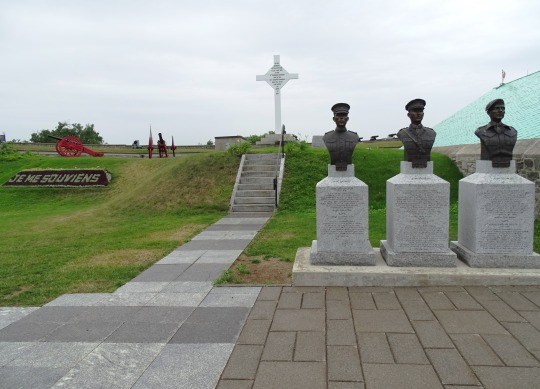
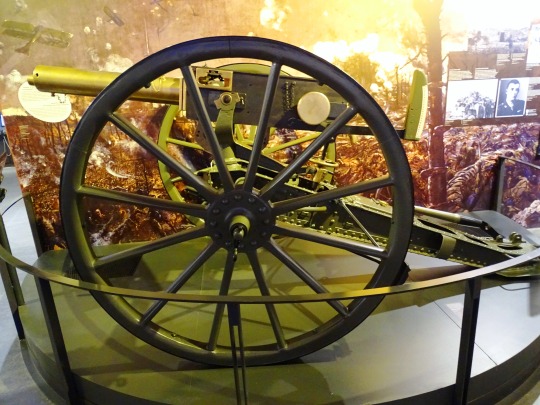

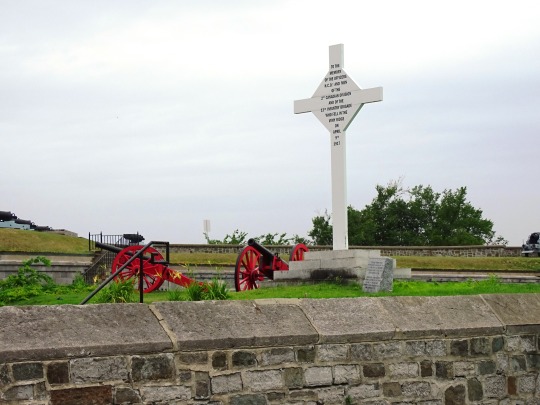
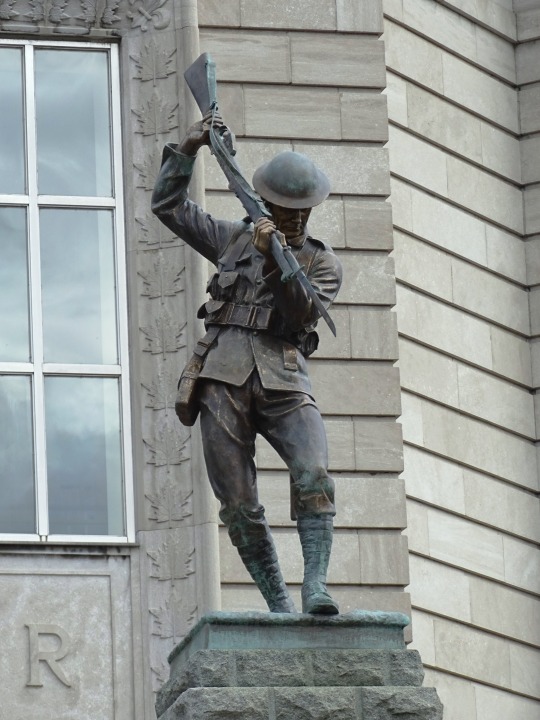
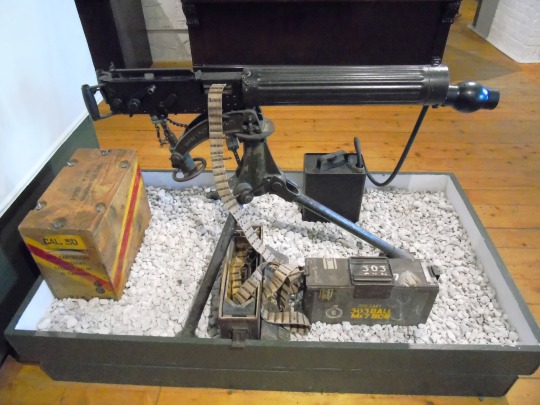
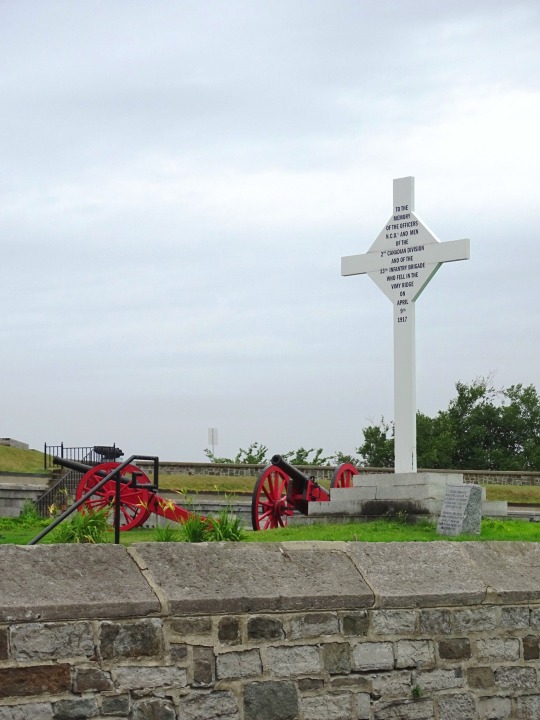


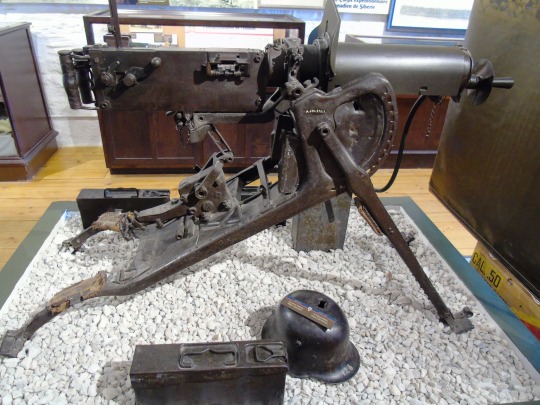
World War I: Canadian forces successfully completed the taking of Vimy Ridge from the Germans on April 12, 1917.
#National War Memorial_The Response by Vernon March#Vimy Ridge Cross#The Road to Vimy and Beyond#Royal 22e Régiment Museum#Citadelle of Quebec#Quebec City#Québec#Ottawa#Ontario#Canada#summer 2018#2015#original photography#Trois-Rivières#citysccape#travel#Monument to the Brave by Cœur-de-Lion McCarthy#Army Museum Halifax Citadel#taking of Vimy Ridge#12 April 1917#anniversary#Canadian history#WWI#World War I#World War One#Fort George#Halifax Citadel National Historic Site of Canada
4 notes
·
View notes
Text
01 Work, The art of War, Richard Jack's First World War, The Taking of Vimy Ridge, with Footnotes
Richard Jack (1866–1952)First World War, The Taking of Vimy Ridge, Easter Monday 1917, c. 1919Oil on canvasheight: 364 cm (11.9 ft) ; width: 591 cm (19.3 ft)Canadian War Museum As far as Urquhart could determine, the 10th Battalion men were not digging in, possibly because its command structure was in disarray after Boyle’s death. Hoping to help restore order, Urquhart approached the battalion’s…

View On WordPress
#Arthistory#Artists#Biography#fineart#footnotes#History#Paintings#Richard Jack#Ridge#Vimy#war#Zaidan
0 notes
Text

July 28, 1914.
For the first time in history, nations from across the globe took up arms. Great Britain and her dominions declared war against Germany and the Central Powers. As the war came closer to many of those dominions, Great Britain came up with a plan of propaganda to help drive recruitment. Each dominion would provide one volunteer to enter a program. British scientists had managed to develop a serum that would make soldiers heartier and more resistant to injury. The draw back is they would age slower, one year for every ten.
In Canada, that recruit was named Sergeant William Sebastian Steele.
While his purpose was to be the poster child for Canadian recruitment programs, not unlike those soldiers that had been picked from the other dominions, Steele was also a soldier on the front lines. Involved in Ypres, Passendaele, Flanders, Vimy Ridge and many other offensives that involved Canadian divisions, Steele remained humble as he carried out his orders with ruthless efficiency.
William was born in Grand Prairie, Alberta in 1892. By the outbreak of the war, he was 22 years old. His hope was to return home and take over the family farm. His military career suddenly became more important.
Throughout the course of the war, British scientists working in secret, found that the serum used on William could be used to aid those soldiers heavily injured in battle. There was just one drawback. Many of these soldiers would end up in a deep sleep, having been given the serum during a period of heavy duress and trauma. Many remained in a coma for decades after the Great War, while many others died only a few years after the Treaty of Versailles was signed.
For William, he returned home. But he was changed in ways that even other veterans could not fathom. He moved from Grand Prairie, settling a lonely log cabin just north of Brentwood, Saskatchewan.

But war has a way of calling to a man.
Asked directly by telegraph if he would assist in the creation of the newly formed Canadian Armed Forces, William saw action again in Europe as the Second World War opened. By this time, he was well into his 50s, but didn't look a day over 26. Many said that they didn't realize that this was the fabled Canadian Red Ensign until they looked into his eyes. Legend says the eyes are the gateway to the soul, and William's soul had seen so much horror. In 1939, he was about to see even more.
By his own request, Captain William Steele was kept back to assist with strategic operations. But by June 6, 1944, he found himself once again rushing into battle as his unit stormed Juno Beach on Normandy.
Juno was the second most heavily fortified of the beaches next to Omaha. Still, thanks to the bravery and tenacity of the Canadians, they were the first to reach their objectives. Steele was among them.

At the close of the Second World War, Steele again returned home. His body was healthy, but his soul felt as though it was broken. He'd witnessed more death than anyone should have. But there was something about Brentwood that seemed to reach out and heal him.
At first, he declined any invitations to speak on his experiences. But at the outbreak of the Korean War, Steele felt he needed to come forward. He did not approve of this conflict, feeling that young men were being sent into a meat grinder for nothing.
Still, he honoured past friends and allies that he served with as he began making his appearances at Remembrance Day Services, talking directly to school children of the heroism of war, but also the horror of war.

William Steele still lives in Brentwood to this day. While he lives alone, and the people of Brentwood respect his privacy, he still takes part in teaching the next generations why war is never something that you would ever want to see.
youtube
#brentwood#world building#Canadian Red Ensign#character#Captain William Steele#character concept#character building#Youtube
0 notes
Text
OH CANADA
Yes, the title is real, and I am talking about Vimy Ridge, that legendary battle won by Canadians during WW1 (smirk). Most people only care about WW2, which is fair enough, given the different purposes of WW1 and WW2. WW1 started because everyone was so eager to beat one another anyway.
Anyways, it seems like I could have spoiled the viewers with the last post, which I am clarifying; the last one is an exception! Please don't expect me to write such a masterpiece ever again!
Anyways, Vimy Ridge. Sure, it wasn't a defining battle or anything, BUT IT WAS IMPORTANT FOR ME AND OTHER CANADIANS. Other important stuff I will save for the reflective corner. But it was the furthest distance that the Allied force has pushed back Germany so far. 5 km is the exact number.
How important was the operation? Let's just say it wasn't huge, but it is a step towards forcing the Germans to surrender. Also, psst, the French tried to take it for so long with 100,000 casualties but didn't succeed. The Canadians did just that with 3/100 of the casualties.
The operation was practiced beforehand, unlike most of the war. It was a carefully planned and rehearsed operation. I actually saw their practice, but it was boring; I only cared about the final products. Anyway, some of the things that they did were giving people specific jobs instead of everyone with a rifle and some grenades. No, they had people who only brought machine guns, some with grenades, and some were engineers. They also used a very bold plan, with the soldiers having to advance as close to the creeping barrage as they could. Most of the time, there would be a time lag for the defensive side to prepare after the artillery gone. But no, after the artillery’s gone, this time the Germans are instantly met with the guns pointed at their faces.
It is time I talk about the time I was there. It was magical, and with over 1000, the Canadians kept going, capturing trenches after trenches before finally freeing Vimy Ridge. The four Canadian divisions were brave and witty. They stayed close to the barrage and were a dream for a plan maker or a war enthusiast like me. After three days, the battle was won decisively. Did I mention that there were no radios? Because of that, it made the plan even bolder and greater, because each of the soldiers had to use their body timing, or they would die, or worse, the entire operation failure. Anyways, they won; it was glorious, and I'm glad I saw it.
Reflection corner: After the war, the land was dedicated to Canada by France as a tribute to Canada's help. They decided to build a memorial for the Canadian soldiers who were in the war, which I included a picture below. Looking from the point of view of a soldier, I am glad that my leaders are smart and allowed me a chance to include myself in such an important operation. The battle also proved the Canadian trait today, with all four divisions working together on a single battle, which led to victory. Each soldier was given their roles, in which they shone the most, and it also reflects in Canadian society today.

Jedi mind trick, you don't see anything:
Work cited: “The Battle of Vimy Ridge.” The Battle of Vimy Ridge | Canadian War Museum, www.warmuseum.ca/the-battle-of-vimy-ridge/. Accessed 29 Nov. 2023.
0 notes
Text
1 note
·
View note
Text
I'm sorry USAmerican military officials are trying to judge Canada because Canada spends under 2% of the GDP on the military and that's just under 2%
They're going to criticize Canada who is well known for saving their sorry rear ends and managing to win battles with less. I'm sorry who fought and won Vimy Ridge who fought and won the useless battle that was Passchendale(it was won and then handed right back over) and who didn't get into both WWs until the very end when they were directly affected(USA) also did they forget who burned the white house because a certain country got too big for their britches and thought they could invade their neighbour(1812) yeah that didn't go so well did it
We may be having a doctor issue but at least Canada has free and decent healthcare at least Canadian children can go to school safely without fear of being shot, women can have abortions, lgbtq people can be out in the open and they can live
Canada does still have a lot of issues but at least people can live even though it isn't easy sometimes.
And Canada unlike their unruly southern neighbours is known as a peacekeeping nation, we're not the ones starting useless wars, we may be participating but we aren't starting them.
1 note
·
View note
Text
Events 4.12 (before 1960)
240 – Shapur I becomes co-emperor of the Sasanian Empire with his father Ardashir I. 467 – Anthemius is elevated to Emperor of the Western Roman Empire. 627 – King Edwin of Northumbria is converted to Christianity by Paulinus, bishop of York. 1012 – Duke Oldřich of Bohemia deposes and blinds his brother Jaromír, who flees to Poland. 1204 – The Crusaders of the Fourth Crusade breach the walls of Constantinople and enter the city, which they completely occupy the following day. 1606 – The Union Flag is adopted as the flag of English and Scottish ships. 1776 – American Revolution: With the Halifax Resolves, the North Carolina Provincial Congress authorizes its Congressional delegation to vote for independence from Britain. 1807 – The Froberg mutiny on Malta ends when the remaining mutineers blow up the magazine of Fort Ricasoli. 1820 – Alexander Ypsilantis is declared leader of Filiki Eteria, a secret organization to overthrow Ottoman rule over Greece. 1831 – Soldiers marching on the Broughton Suspension Bridge in Manchester, England, cause it to collapse. 1861 – American Civil War: Battle of Fort Sumter. The war begins with Confederate forces firing on Fort Sumter, in the harbor of Charleston, South Carolina. 1862 – American Civil War: The Andrews Raid (the Great Locomotive Chase) occurs, starting from Big Shanty, Georgia (now Kennesaw). 1864 – American Civil War: The Battle of Fort Pillow: Confederate forces kill most of the African American soldiers that surrendered at Fort Pillow, Tennessee. 1865 – American Civil War: Mobile, Alabama, falls to the Union Army. 1877 – The United Kingdom annexes the Transvaal. 1900 – One day after its enactment by the Congress, President William McKinley signs the Foraker Act into law, giving Puerto Rico limited self-rule. 1910 – SMS Zrínyi, one of the last pre-dreadnought battleships built by the Austro-Hungarian Navy, is launched. 1917 – World War I: Canadian forces successfully complete the taking of Vimy Ridge from the Germans. 1927 – Shanghai massacre of 1927: Chiang Kai-shek orders the Chinese Communist Party members executed in Shanghai, ending the First United Front. 1927 – Rocksprings, Texas is hit by an F5 tornado that destroys 235 of the 247 buildings in the town, kills 72 townspeople and injures 205; third deadliest tornado in Texas history. 1928 – The Bremen, a German Junkers W 33 type aircraft, takes off for the first successful transatlantic aeroplane flight from east to west. 1934 – The strongest surface wind gust in the world at the time of 231 mph, is measured on the summit of Mount Washington, New Hampshire. It has since been surpassed. 1934 – The U.S. Auto-Lite strike begins, culminating in a five-day melee between Ohio National Guard troops and 6,000 strikers and picketers. 1937 – Sir Frank Whittle ground-tests the first jet engine designed to power an aircraft, at Rugby, England. 1945 – U.S. President Franklin D. Roosevelt dies in office; Vice President Harry S. Truman becomes President upon Roosevelt's death. 1945 – World War II: The U.S. Ninth Army under General William H. Simpson crosses the Elbe River astride Magdeburg, and reaches Tangermünde—only 50 miles from Berlin. 1955 – The polio vaccine, developed by Dr. Jonas Salk, is declared safe and effective.
1 note
·
View note